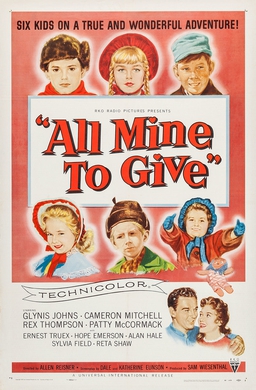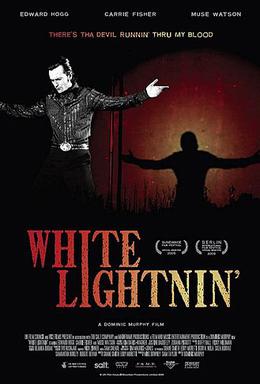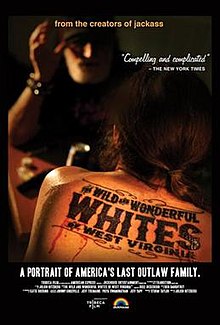
Van is a census-designated place (CDP) in Boone County, West Virginia, United States, along the Pond Fork of the Little Coal River. As of the 2010 census, its population was 211. Its ZIP code is 25206. Van was named after Van Linville, who established its post office and served as its first postmaster.

Boone County is a county in the U.S. state of West Virginia. As of the 2020 census, the population was 21,809. Its county seat is Madison. Boone County is part of the Charleston, WV Metropolitan Statistical Area. Leading industries and chief agricultural products in Boone County include coal, lumber, natural gas, tobacco, and strawberries.

Bertie County is a county located in the northeast area of the U.S. state of North Carolina. As of the 2020 census, the population was 17,934. Its county seat is Windsor. The county was created in 1722 as Bertie Precinct and gained county status in 1739.

Boone is a city in Des Moines Township, and county seat of Boone County, Iowa, United States.

Patrick Charles Eugene Boone is an American singer, actor and composer. He was a successful pop singer in the United States during the 1950s and early 1960s. He sold more than 45 million records, had 38 Top 40 hits, and appeared in more than 12 Hollywood films.

Mamie Van Doren is an American actress, singer, and sex symbol. She is perhaps best known for the rock 'n' roll, juvenile delinquency exploitation film Untamed Youth (1957).
Kenneth Bancroft Clark and Mamie Phipps Clark were American psychologists who as a married team conducted research among children and were active in the Civil Rights Movement. They founded the Northside Center for Child Development in Harlem and the organization Harlem Youth Opportunities Unlimited (HARYOU). Kenneth Clark was also an educator and professor at City College of New York, and first Black president of the American Psychological Association.

Virginia Mayo was an American actress and dancer. She was in a series of popular comedy films with Danny Kaye and was Warner Bros. biggest box-office draw in the late 1940s. She also co-starred in the 1946 Oscar-winning movie The Best Years of Our Lives.

Jesco White, also known as the "Dancing Outlaw" is an American folk dancer and entertainer. He is best known as the subject of three American documentary films that detail his desire to follow in the footsteps of his famous father, D Ray White, while dealing with depression, drug addiction, alcoholism, and the poverty that affects some parts of rural Appalachia.

The Coming of Bill is a novel by P. G. Wodehouse. It was published as Their Mutual Child in the United States on 5 August 1919 by Boni & Liveright, New York, and as The Coming of Bill in the United Kingdom on 1 July 1920 by Herbert Jenkins Ltd, London. The story first appeared in Munsey's Magazine (US) in May 1914 under the title The White Hope.

Mary Draper Ingles, also known in records as Mary Inglis or Mary English, was an American pioneer and early settler of western Virginia. In the summer of 1755, she and her two young sons were among several captives taken by Shawnee after the Draper's Meadow Massacre during the French and Indian War. They were taken to Lower Shawneetown at the Ohio and Scioto rivers. Ingles escaped with another woman after two and a half months and trekked 500 to 600 miles, crossing numerous rivers, creeks, and the Appalachian Mountains to return home.
Roger Alan Wade is an American singer-songwriter from Chattanooga, Tennessee.
Jacob Young is an American screenwriter, cinematographer, film editor, and filmmaker best known for creating documentary films that explore eccentric people living in his native Appalachia.
Rebecca Bryan Boone was an American pioneer and the wife of famed frontiersman Daniel Boone. She began her life in the Colony of Virginia (1606–1776), and at the age of ten moved with her grandparents and extended family to the wilderness of the Province of North Carolina. It was there that she met her future husband, Daniel Boone. Rebecca Boone raised ten of her own children and eight nephews and nieces that she and Daniel had adopted. Since Daniel was away for extended hunting and exploration trips, sometimes for several years at a time, Boone generally raised and protected their eighteen children by herself. Living in the frontier, and needing to be self-reliant, she was a healer, midwife, sharpshooter, gardner, tanner, and weaver. The family was subject to attacks by Native Americans as their land was encroached upon by white settlers and by bands of white men, called highwaymen, who attacked settlers. Several times she and her family left their home for shelter and protection in nearby forts and in one case lived several years in Culpeper County, Colony of Virginia, during the Anglo-Cherokee War.
Julien Nitzberg is an American screenwriter, stage writer, lyricist, theater director and film director, best known in the film world as the director of the documentary The Wild and Wonderful Whites of West Virginia. In the theater world, Nitzberg is best known for writing the book and lyrics for two musicals. His first musical was "The Beastly Bombing or A Terrible Tale of Terrorists Tamed by the Tangles of True Love." Nitzberg wrote the book and lyrics and directed this musical in Los Angeles and New York. The Beastly Bombing won the LA Weekly Theater Award for Best Musical of the Year. His second musical was "For the Love of a Glove: An Unauthorized Musical Fable About the Life of Michael Jackson As Told By His Glove."

All Mine to Give is a 1957 Technicolor melodrama film directed by Allen Reisner and starring Glynis Johns, Cameron Mitchell, and Rex Thompson. When first one parent, then the other, dies, their six children have to look after themselves in the Wisconsin of the mid-19th century.

White Lightnin' is a 2009 dramatic film directed by Dominic Murphy and written by Eddy Moretti and Shane Smith. It stars Edward Hogg, Carrie Fisher, Muse Watson. Inspired by the life of Jesco White, an Appalachian mountain dancer, it was shown at the 2009 Sundance Film Festival.
Donald Ray White, more commonly known as D. Ray White, was an American mountain dancer and entertainer, and the patriarch of the White family. He has been featured in several American documentary films that detail the White family. His style was a subtle mix of tap and clog dancing that is native to the Appalachian Mountains and Appalachia. D. Ray rose to regional stardom before his murder in 1985 and became known as one of the greatest mountain dancers of his time. His son, Jesco White, known as "The Dancing Outlaw," who has also been the subject of several documentaries, has carried on his style and continues to perform.

The Loves of Edgar Allan Poe is a 1942 American drama film directed by Harry Lachman, starring Linda Darnell and Shepperd Strudwick. The film is a cinematic biography of Edgar Allan Poe that examines his romantic relationships with Sarah Elmira Royster and Virginia Clemm.
Jesko or Jesco is a male given name, which is used among Slavs and in Germany. It is a short form of Jaromir or Jaroslaw and may mean "the peaceful one", "the brave one", "the proud one" or "the soldierly one".













